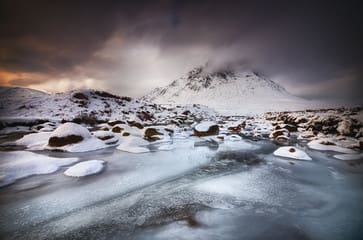
For almost 400 years Scotland couldn’t celebrate Christmas! In the days before Christ, the winter solstice was celebrated. This was the shortest day on the calendar and seemed be an important time in history. When the vikings raided Scotland they too celebrated the Winter solstice and it’s believed they celebrated their ancestors during this darkest time of year. This time eventually became know as Yule.

When Christianity arrived to Scotland, Yule became a Christmas celebration. In 1560 there was a split in the church and this time was called the Scottish reformation. This change of thought brought on the belief that extravagent religious activities were unacceptable. Over time it became a crime to celebrate their Christmas traditions.
The Scottish people began focusing their celebrations on New Year’s eve – Hogmanay.
The Scottish officially lifted the ban in 1958 and Christmas became a public holiday in Scotland but Hogmanay remained a strong celebration.

5 Scottish Hogmanay traditions.
- Redding of the house. This is similar to a spring cleaning with a great emphasis on the fire place. Some people had a skill to read the ashes from the fire place. They also believe in paying off outstanding debts before the stroke of midnight.
- The First footing. After the stroke of midnight, neighbors visit with gifts (shortbread or fruit cake). The first foot to enter the house determines your luck for the year. If a tall dark and handsome man enters first, then this is the best luck of all. Going back to Viking times, the vikings brought the fair headed people to Scotland. So if a fair headed man or woman is to enter first, it’s the worse luck possible for your year to come.
- Bonfires are a popular part of driving away evil spirts and purify the space.
- The Saining of the house. A rural tradition of blessing the house and the livestock with holy water from a local stream. After the blessing, the female of the house visits each room with a smoldering juniper branch filling the house with purifying smoke.
- Singing Auld Lang Syne. This is a traditional Scottish song written by the Scottish poet Robert Burns.


Standards based reading lesson – completely done for you!

